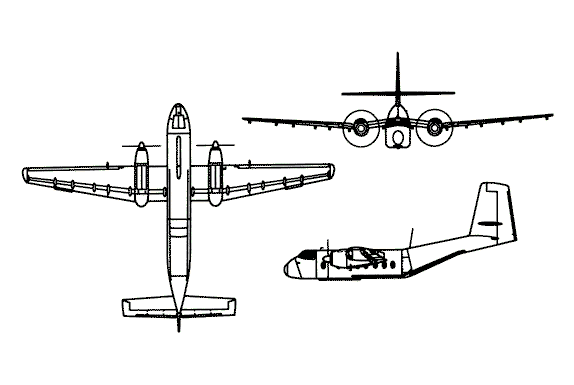




Specifications | |
| Country of Origin | Canada (DHC-4A, CC-108) |
| Builder | |
| Role | STOL utility transport (32 equipped troops, 1/4-ton trucks) |
| Similar Aircraft | Buffalo C-8A, DHC-5 |
| Wing Span | 95 ft, 2 in (29.16 m) |
| Length | 72 ft, 7 in (22.14 m) |
| Height | |
| Weight | |
| Engine | |
| Maximum speed | |
| Cruising speed | |
| Range | |
| Service Ceiling | |
| Armament | Usually none |
| Crew | Three |
| Cost | |
| User Countries | Ecuador, India, Malaysia, Spain, Thailand, USA |
